TPU (Thermoplastic Polyurethane) and PETG (Polyethylene Terephthalate Glycol-modified) are popular thermoplastics in 3D printing, known for their excellent performance and versatility.
While both materials are thermoplastics, they differ significantly in performance, cost, and applications.
TPU is prized for its exceptional flexibility and elasticity, making it ideal for phone cases, shoe soles, and industrial components.
PETG, however, offers a balanced combination of strength and flexibility, suitable for mechanical parts, protective covers, and medical devices.
In terms of cost, TPU is generally more expensive, with a one-kilogram spool priced around $35, while PETG costs about $30 per kilogram.
This article will provide an in-depth comparison of PETG vs TPU, exploring their characteristics and differences to offer readers a detailed guide.
What Is PETG?
PETG (Polyethylene Terephthalate Glycol-modified) is a modified PET plastic, classified as an amorphous copolyester.
It is produced through the polycondensation of three monomers: terephthalic acid (PTA), ethylene glycol (EG), and 1,4-cyclohexanedimethanol (CHDM).
PETG boasts excellent transparency, chemical resistance, impact resistance, and ease of processing.
These characteristics make PETG perform exceptionally well in various applications, such as packaging materials, medical devices, electronic product housings, and 3D printing.
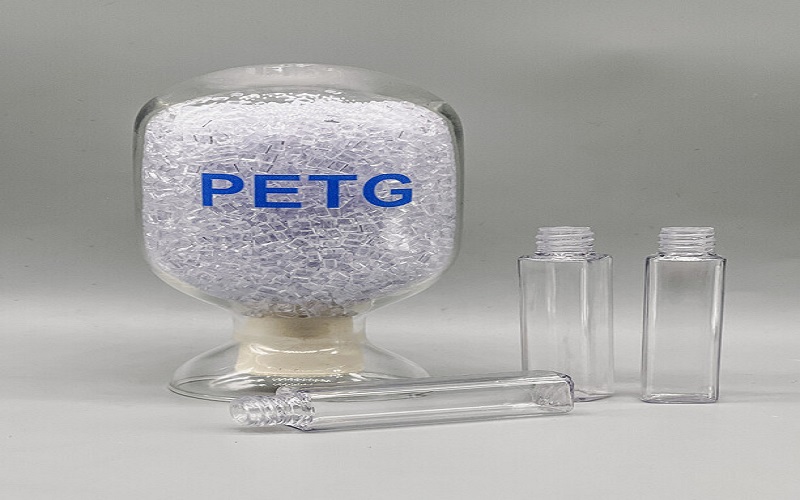
What Is TPU?
Thermoplastic polyurethane, abbreviated as TPU, is a type of thermoplastic elastomer (TPE).
It is an (AB)n-type block linear polymer, primarily divided into polyester and polyether types.
TPU materials are distinguished by their wide hardness range (60A-85D), excellent wear resistance, oil resistance, transparency, and good elasticity.
In humid environments, the hydrolysis stability of polyether-based TPU far surpasses that of polyester-based TPU.
Due to its primarily linear polymer structure, TPU can be processed using the same techniques and equipment as thermoplastic plastics, such as injection molding, extrusion, blow molding, and calendering.
This makes it particularly suitable for the mass production of small to medium-sized components.
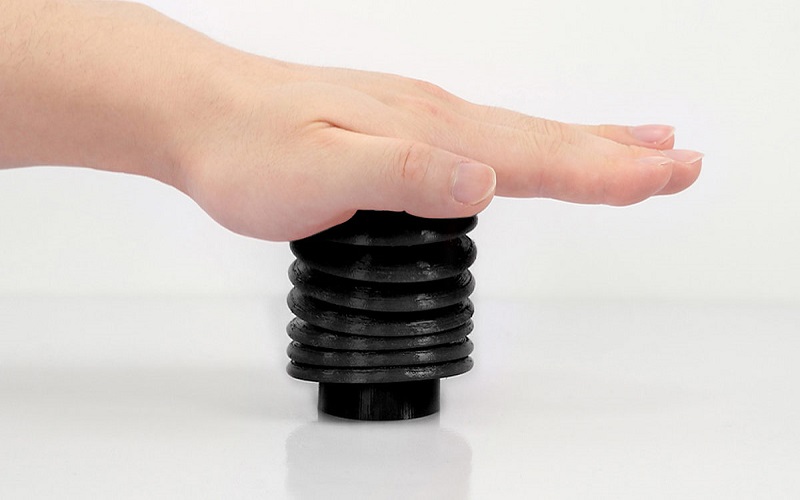
PETG vs TPU:Properties
PETG has glass-like transparency and a density close to that of glass, excellent gloss, chemical resistance, impact resistance, and ease of processing.
On the other hand, the outstanding characteristics of TPU include excellent abrasion resistance, exceptional ozone resistance, high hardness, high strength, good elasticity, and low-temperature resistance.
They also exhibit good oil, chemical, and environmental resistance.
In humid environments, the hydrolysis stability of polyether-based TPU far exceeds that of polyester-based TPU.
Below are the physical property data for PETG and TPU:
Properties | PETG | TPU |
Density(g/cm3) | 1.27 | 1.10~1.25 |
Melting Point(℃) | 230-260 | 160-220 |
Tensile Strength(MPa) | 50.3-53.1 | 25-50 |
Water Absorption(%) | 0.2 | 0.1-1.0 |
Shrinkage(%) | 0.2-0.8 | 0.4-1.5 |
Impact Strength (J/m) | 85-100 | 100-150 |
Heat Deflection Temp (℃) | 70-80 | 40-80 |
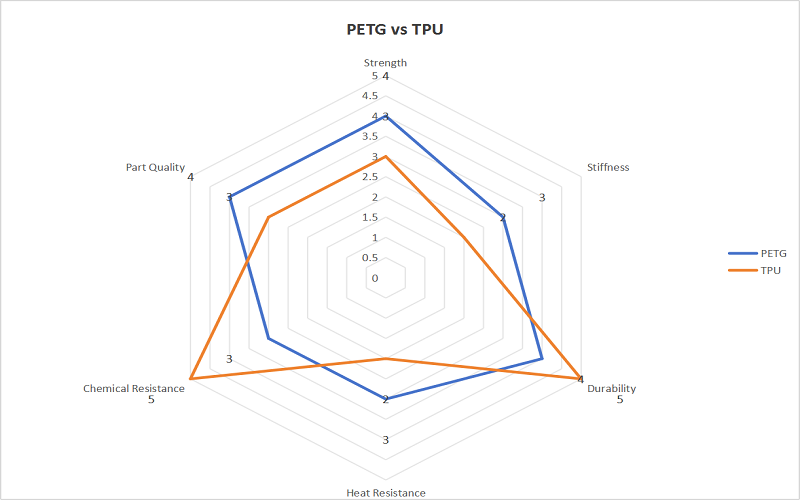
PETG vs TPU:Processing Methods
Due to the distinct characteristics of PETG and TPU, their processing methods differ accordingly.
PETG can be processed using traditional methods such as extrusion, injection molding, blow molding, and vacuum forming.
It can also be overmolded with other polyesters, elastomeric plastics, or ABS.
PETG injection molding products exhibit excellent transparency and gloss, good toughness, processability, and superior coloring properties, making them widely used in medical devices and household utensils.
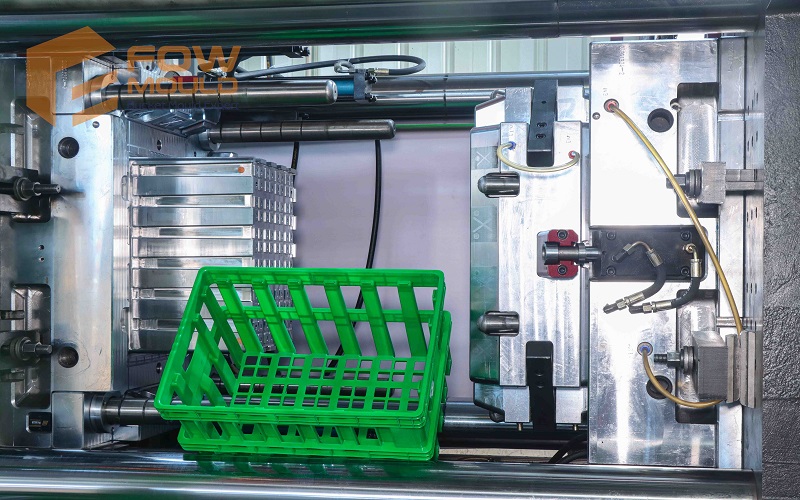
For TPU materials, the main processing methods include injection molding, extrusion, blow molding, and calendering, with TPU injection molding being the most common.
Typically, TPU can be molded directly without blending with other materials.
However, in some cases, plastic additives are added to improve processing performance or physical properties.
For example, to enhance TPU’s resistance to photoaging, antioxidants such as 1010 and UV absorbers like UV-9 can be added during processing.
Additionally, incorporating 1% carbon black can significantly improve TPU’s aging resistance.
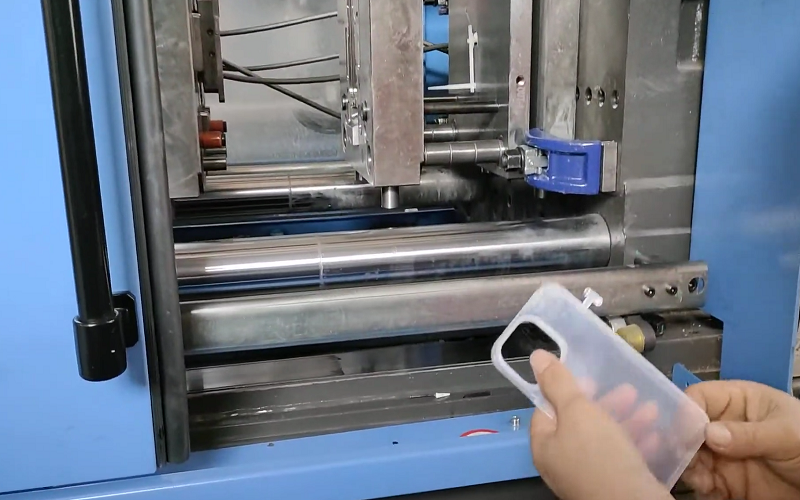
PETG vs TPU:Printing
When using PETG and TPU for 3D printing, each material has its own advantages and limitations.
PETG is popular in the 3D printing field due to its durability and strength. It typically extrudes at temperatures between 220°C and 260°C, with an ideal print speed of 40-60mm/s.
PETG filament is widely used for creating various 3D printed objects such as mechanical parts, small statues, toys, and household items, making it an excellent choice for printing wear-resistant components.
However, compared to materials like PLA, PETG has a higher viscosity, making it prone to sticking to the print bed and warping.
Therefore, printing PETG requires a suitable print bed surface and a heated bed.
Using PEI sheets, glue sticks, painter’s tape, and other bed adhesion aids can help improve bed adhesion.
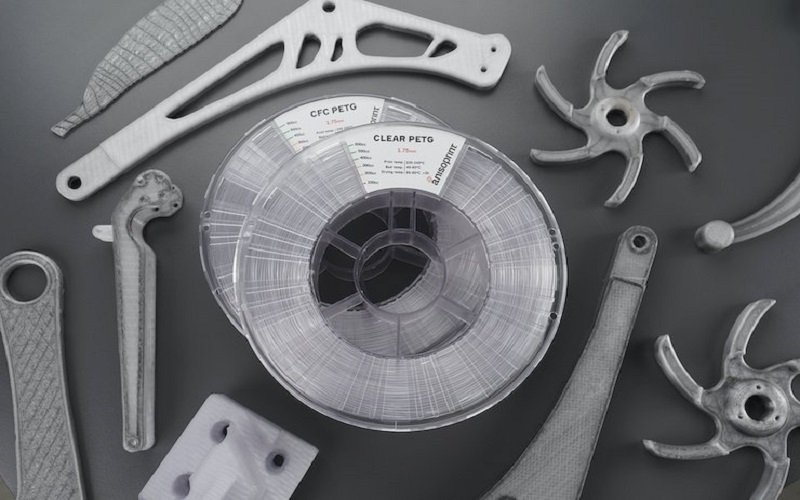
TPU’s versatility stems from the combination of hard and soft segments in its block copolymer structure, which is why it is widely used by 3D printing companies.
Compared to PLA, TPU has higher flexibility, allowing 3D printed parts to bend or flex freely during use without breaking.
However, TPU’s rubber-like consistency can lead to issues such as slipping, stringing, and sometimes difficulty maintaining proper layer adhesion.
Therefore, TPU should be printed at slower speeds, typically between 20-30mm/s.
Using glue, blue painter’s tape, or other adhesive aids can help improve bed adhesion.
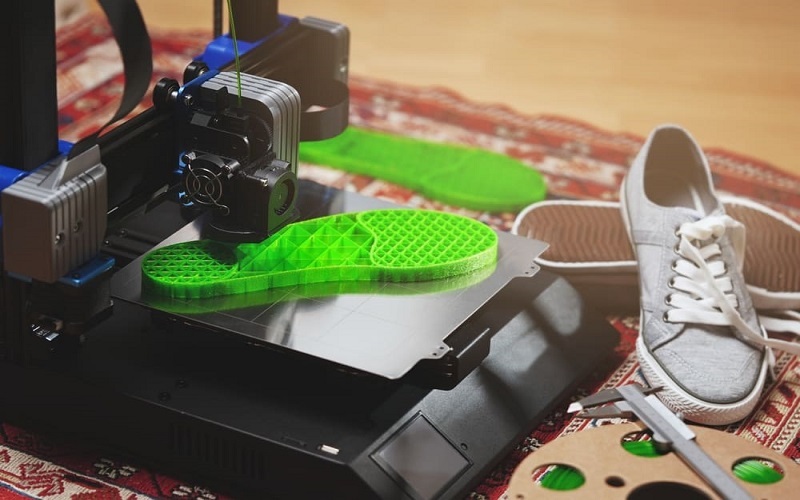
PETG vs TPU:Applications
PETG materials commonly come in forms such as sheets, tubes, rods, and films, which make them widely applicable in various fields and applications.
For instance, PETG sheets are often used for advertising displays, protective goggles, and architectural decorations;
PETG tubes and rods are extensively utilized in mechanical components and medical devices; and PETG films are commonly employed in food packaging and industrial protective films.
As an alternative to PVC and rubber, TPU’s applications span across various industries.
It is widely used in footwear, 3C protective cases, tubing, and films.
In footwear, TPU’s excellent elasticity and wear resistance make it an ideal material for sports and casual shoes.
For 3C protective cases, TPU is favored for its impact resistance and chemical durability, commonly used in phone and tablet covers.
In tubing, TPU’s good pressure and oil resistance make it suitable for industrial pipes and medical catheters.
Additionally, TPU films, known for their transparency and toughness, are extensively used in food packaging, medical packaging, and protective films.
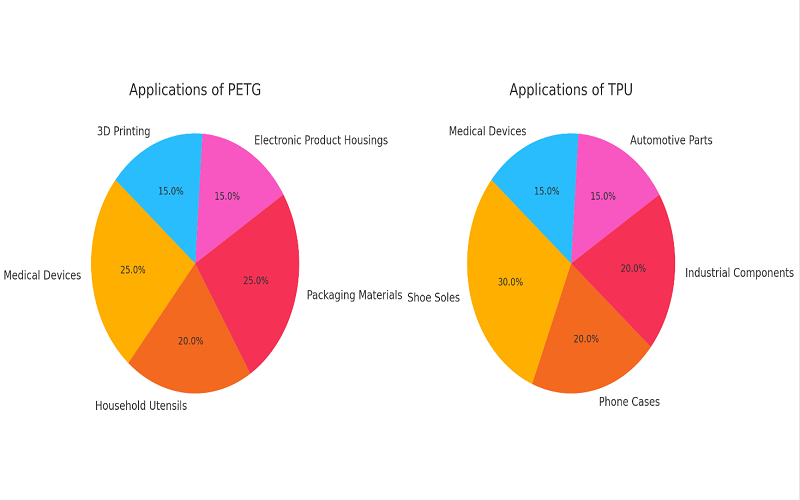
PETG vs TPU:Safety
When making products that come into contact with food or skin, it is crucial to consider the safety of the materials.
People often wonder, “Is PETG safe?” or question the safety of TPU.
In fact, PETG and TPU are generally considered safe materials, as they do not release harmful chemicals and meet food-grade plastic standards.
PETG has low toxicity and low volatility, making it highly biocompatible for medical devices and other applications that involve direct contact with the human body.
Additionally, PETG does not produce harmful fumes during processing, and its high melting point prevents decomposition at high temperatures, ensuring safety during processing and use.
High-quality TPU is commonly used in medical catheters and implants, which require biocompatibility, proving its safety for contact with the human body.
However, during TPU processing, it is important to avoid excessively high temperatures to prevent the release of harmful substances.
Therefore, following proper processing guidelines is essential to ensure safety.
In summary, when choosing PETG or TPU, it is crucial to consider the specific application requirements and ensure the safety of their use and processing.
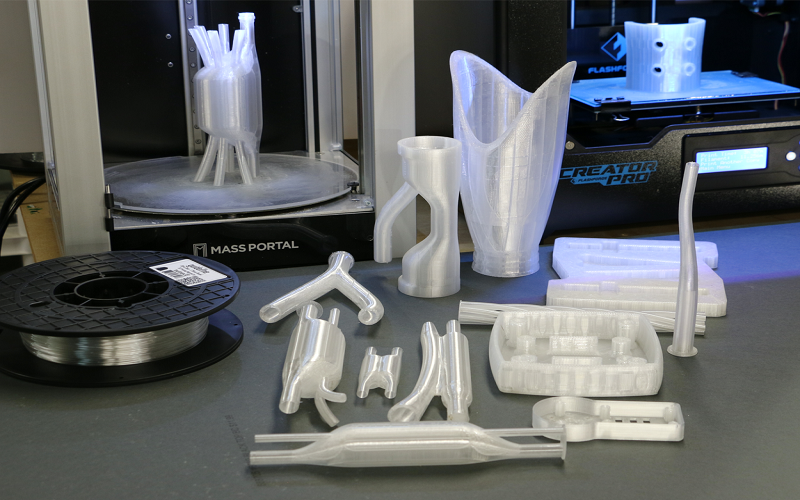
PETG vs TPU:Recyclability and Sustainability
As sustainable development gains traction, the recyclability of plastics has become a major focus. Both PETG and TPU are recyclable plastics.
PETG sheets are considered eco-friendly thermoplastics, composed of carbon, hydrogen, and oxygen, and are biodegradable.
When discarded, they decompose into water and carbon dioxide, posing no environmental harm.
Proper recycling processes allow PETG waste to be reprocessed and reused, reducing environmental impact.
TPU is a high-performance, green polymer material. Its waste can be recycled and reused, and various additives or fillers can be used during production to improve properties and reduce costs.
TPU materials meet circular economy and sustainable development standards, representing a key future material with significant market potential.
In summary, PETG and TPU offer excellent performance and sustainability, providing broad application prospects.

PETG vs TPU:Cost
When choosing between PETG and TPU, cost is a crucial factor. A 1.75mm, 1Kg spool of PETG filament costs $14, while TPU costs $30-$35.
This makes PETG more affordable for large-scale production.
PETG is easy to process without special equipment, reducing production costs.
TPU, however, may require special equipment due to its elasticity and abrasion resistance, increasing processing costs.
Despite higher initial costs, TPU’s durability can reduce replacement and maintenance frequency, offering economic benefits in specific applications.
For budget-sensitive, large-scale production, PETG is more economical. For high-durability needs, TPU offers greater long-term value despite higher costs.
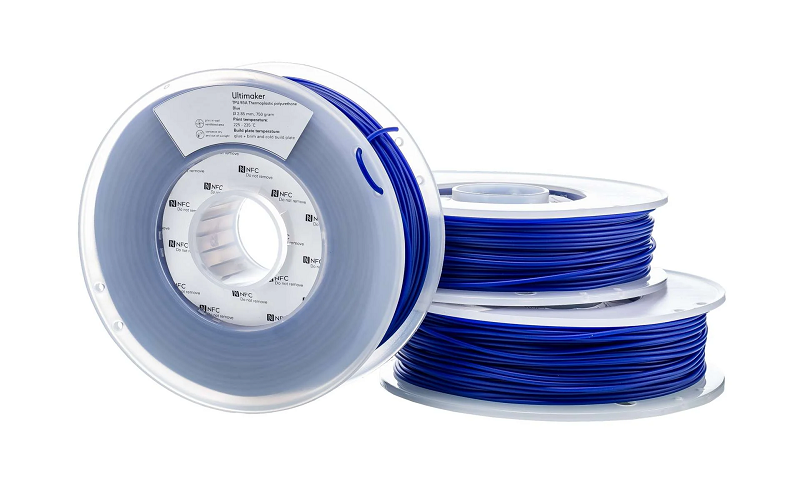
Conclusion
In summary, we find that both PETG and TPU have their own strengths and weaknesses.
PETG boasts excellent toughness, tensile strength, and impact resistance, but it is not very hard, easily scratched, not resistant to high-temperature boiling, and prone to water absorption and deformation.
On the other hand,TPU has a wide hardness range, high elasticity, excellent abrasion resistance, oil resistance, and solvent resistance, and can maintain performance at low temperatures, but it is not heat-resistant and has poor weather resistance.
In terms of applications, PETG is suitable for those requiring high toughness and transparency, while TPU is better suited for applications needing high flexibility and elasticity.
From a 3D printing perspective, PETG is easier to print and suitable for parts subject to wear, whereas TPU, with its flexibility and elasticity, is ideal for applications requiring high elasticity and impact resistance.
Considering environmental and cost factors, both PETG and TPU are environmentally friendly materials, but PETG is more cost-effective for large-scale production.
In conclusion, the choice between PETG and TPU should be based on specific application needs.
If you need more information about injection molding, please contact FOWMOULD for a free quote!
